Samba is a free/open source and popularly used software for sharing files and print services between Unix-like systems including Linux and Windows hosts on the same network.
In this guide, we will show how to setup Samba4 for basic file sharing between a Ubuntu systems and Windows machines. We will cover two possible scenarios: anonymous (unsecure) as well as secure file sharing.
Suggested Read: How to Install Samba4 on CentOS/RHEL 7 for File Sharing on Windows
Note that starting from version 4.0, Samba can be used as an Active Directory (AD) domain controller (DC). We have organized a special series for setting up Samba4 Active Directory Domain Controller, which comprises of key topics under Ubuntu, CentOS, and Windows.
Install and Configure Samba in Ubuntu
Samba server is available to install from the default Ubuntu repositories using the apt package manager tool as shown.
$ sudo apt install samba samba-common python-dnspython
Once samba server installed, now its time to configure samba server as: unsecure anonymous and secure file sharing.
For this, we need to edit the main Samba configuration file /etc/samba/smb.conf (which explain various configuration directives).
First backup the original samba configuration file as follows.
$ sudo cp /etc/samba/smb.conf /etc/samba/smb.conf.orig
Afterwards, we’ll proceed to configure samba for anonymous and secure file sharing services as explained below.
Important: Before moving any further, ensure that the Windows machine is in the same workgroup which will be configured on the Ubuntu server.
Check Windows Machine WorkGroup Settings
Login into your Windows machine, right click on “This PC” or “My Computer” → Properties → Advanced System Settings → Computer Name to verify the workgroup.
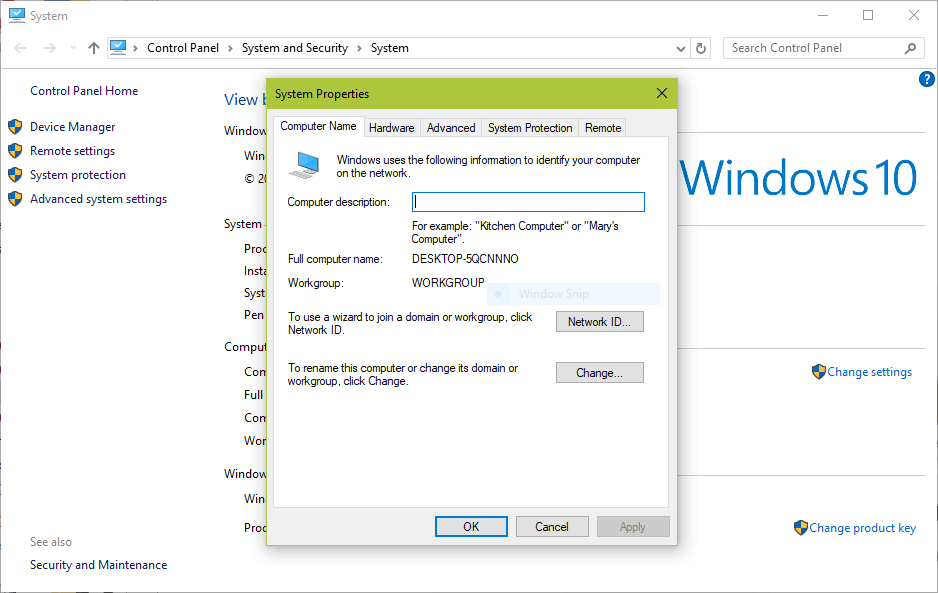
Alternatively, open the command prompt and view it by running the command below and look for “workstation domain”.
>net config workstation
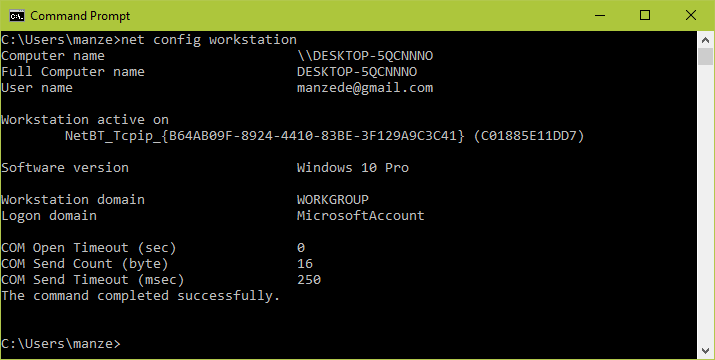
Once you know your Windows workgroup its time to move ahead and configure samba server for file sharing.
Anonymous Samba File Sharing
First start by creating a shared samba directory where the files will be stored.
$ sudo mkdir -p /srv/samba/anonymous_shares
Then set the appropriate permissions on the directory.
$ sudo chmod -R 0775 /srv/samba/anonymous_shares $ sudo chown -R nobody:nogroup /srv/samba/anonymous_shares
Now open the configuration file.
$ sudo vi /etc/samba/smb.conf OR $ sudo nano /etc/samba/smb.conf
Next edit or modify the directive settings as described below.
global] workgroup = WORKGROUP netbios name = ubuntu security = user [Anonymous] comment = Anonymous File Server Share path = /srv/samba/anonymous_shares browsable =yes writable = yes guest ok = yes read only = no force user = nobody
Now verify current samba settings by running the command below.
$ testparm
Load smb config files from /etc/samba/smb.conf rlimit_max: increasing rlimit_max (1024) to minimum Windows limit (16384) WARNING: The "syslog" option is deprecated Processing section "[printers]" Processing section "[print$]" Processing section "[Shares]" Loaded services file OK. Server role: ROLE_STANDALONE Press enter to see a dump of your service definitions # Global parameters [global] netbios name = UBUNTU server string = %h server (Samba, Ubuntu) server role = standalone server map to guest = Bad User obey pam restrictions = Yes pam password change = Yes passwd program = /usr/bin/passwd %u passwd chat = *Enter\snew\s*\spassword:* %n\n *Retype\snew\s*\spassword:* %n\n *password\supdated\ssuccessfully* . unix password sync = Yes syslog = 0 log file = /var/log/samba/log.%m max log size = 1000 dns proxy = No usershare allow guests = Yes panic action = /usr/share/samba/panic-action %d idmap config * : backend = tdb [printers] comment = All Printers path = /var/spool/samba create mask = 0700 printable = Yes [print$] comment = Printer Drivers path = /var/lib/samba/printers browseable = No [Anonymous] comment = Anonymous File Server Share path = /srv/samba/anonymous_shares force user = nobody read only = No guest ok = Yes
Then restart Samba services to effect the above changes.
$ sudo systemctl restart smbd [Systemd] $ sudo service smbd restart [Sys V]
Testing Anonymous Samba File Sharing
Go to the Windows machine, and open “Network” from a Windows Explorer window. Click on the Ubuntu host (TECMINT for our case), or else try to access the samba server using its IP address.
\\192.168.43.168
Note: Use the ifconfig command to get your Ubuntu server IP address.
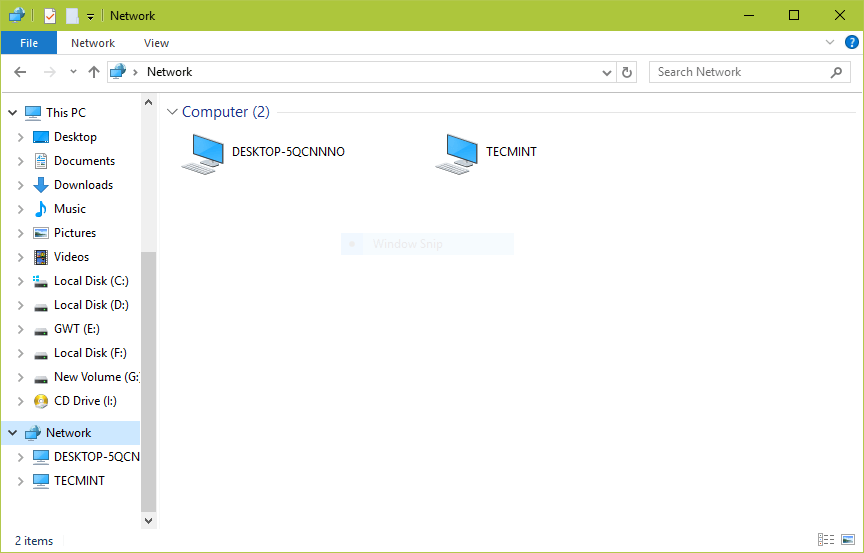
Then open the Anonymous directory and try to add files in there to share with other users.
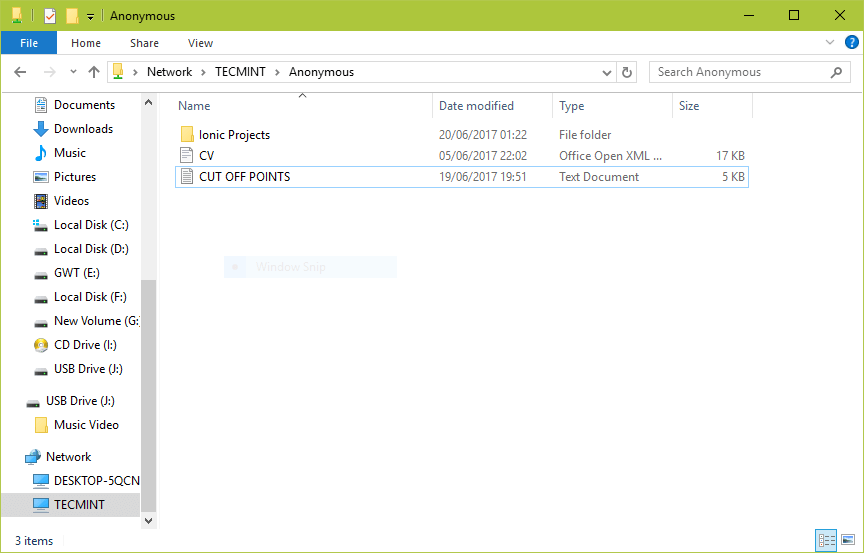
Secure Samba File Sharing
To password-protect a samba share, you need to create a group “smbgrp” and set a password for each user. In this example I use aaronkilik as user and password as “tecmint“.
$ sudo addgroup smbgrp $ sudo usermod aaronkilik -aG smbgrp $ sudo smbpasswd -a aaronkilik
Note: The samba security mode: security = user requires clients to enter a username and password to connect to shares.
Samba user accounts are separate from system accounts, however, you can optionally install the libpam-winbind package which is used to sync system users and passwords with the samba user database.
$ sudo apt install libpam-winbind
Then create the secure directory where the shared files will be kept.
$ sudo mkdir -p /srv/samba/secure_shares
Next, set the appropriate permissions on the directory.
$ sudo chmod -R 0770 /srv/samba/secure_shares $ sudo chown -R root:smbgrp /srv/samba/secure_shares
Now open the configuration file.
$ sudo vi /etc/samba/smb.conf OR $ sudo nano /etc/samba/smb.conf
Next edit or modify the directive settings as described below.
[Secure] comment = Secure File Server Share path = /srv/samba/secure_shares valid users = @smbgrp guest ok = no writable = yes browsable = yes
Just like before, run this command to see your current samba settings.
$ testparm
Load smb config files from /etc/samba/smb.conf rlimit_max: increasing rlimit_max (1024) to minimum Windows limit (16384) WARNING: The "syslog" option is deprecated Processing section "[printers]" Processing section "[print$]" Processing section "[Shares]" Loaded services file OK. Server role: ROLE_STANDALONE Press enter to see a dump of your service definitions # Global parameters [global] netbios name = UBUNTU server string = %h server (Samba, Ubuntu) server role = standalone server map to guest = Bad User obey pam restrictions = Yes pam password change = Yes passwd program = /usr/bin/passwd %u passwd chat = *Enter\snew\s*\spassword:* %n\n *Retype\snew\s*\spassword:* %n\n *password\supdated\ssuccessfully* . unix password sync = Yes syslog = 0 log file = /var/log/samba/log.%m max log size = 1000 dns proxy = No usershare allow guests = Yes panic action = /usr/share/samba/panic-action %d idmap config * : backend = tdb [printers] comment = All Printers path = /var/spool/samba create mask = 0700 printable = Yes [print$] comment = Printer Drivers path = /var/lib/samba/printers browseable = No [Anonymous] comment = Anonymous File Server Share path = /srv/samba/anonymous_shares force user = nobody read only = No guest ok = Yes [Secure] comment = Secure File Server Share path = /srv/samba/secure_shares valid users = @smbgrp read only = No
Once you done with the above configurations, restart Samba services to apply the changes.
$ sudo systemctl restart smbd [Systemd] $ sudo service smbd restart [Sys V]
Testing Secure Samba File Sharing
As before, in the Windows machine, and open “Network” from a Windows Explorer window. Click on the Ubuntu host (TECMINT for our case). You may get the error below, if not proceed to the next step.
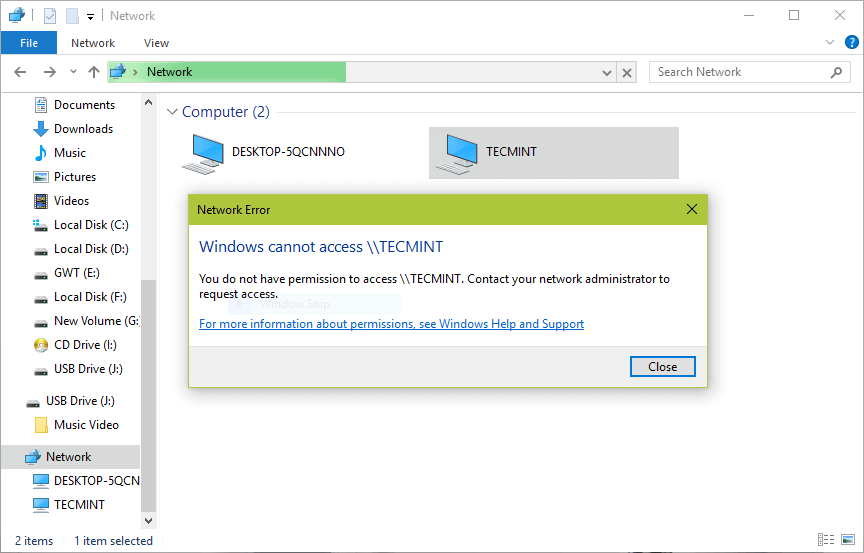
Try to access the server using its IP address, e.g. \\192.168.43.168 like this. Then enter the credentials (username and password) for user aaronkilik and click OK.
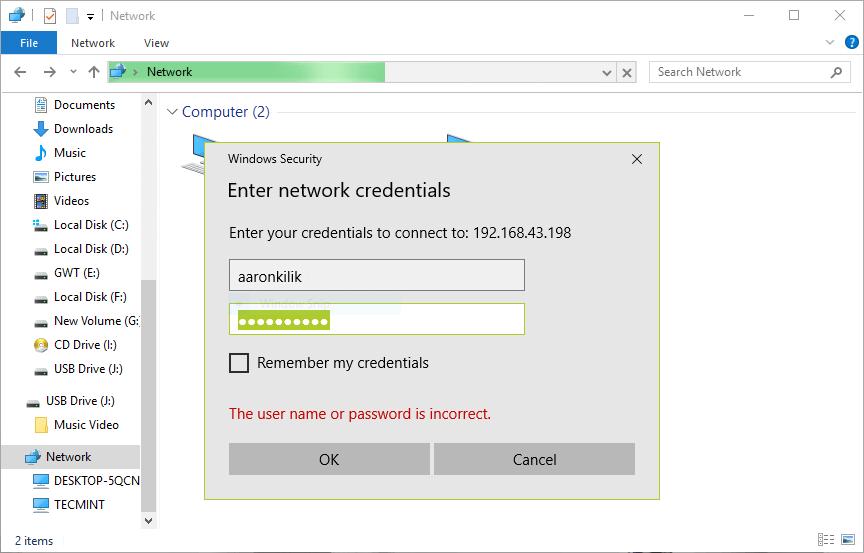
You’ll now view all the shared directories, click on Secure to open it.
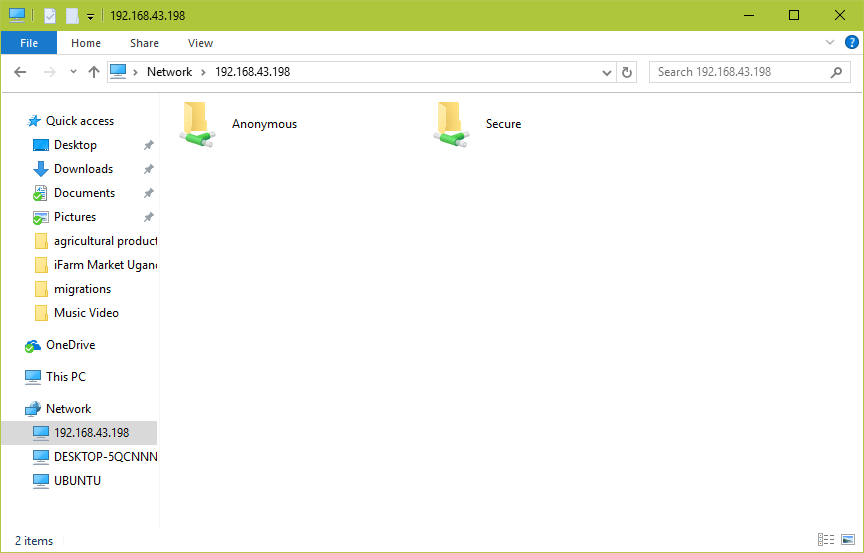
You can securely share some files with other permitted users on the network by dropping them in this directory.
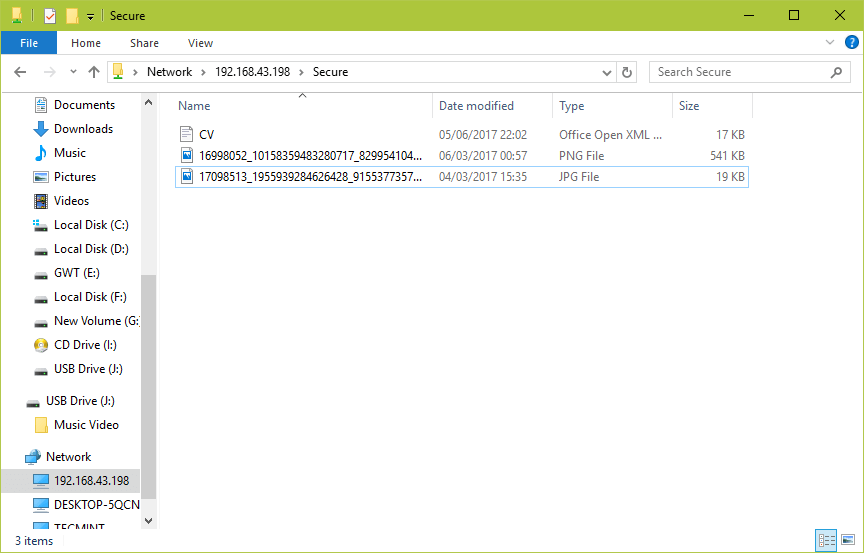
Enable Samba in UFW Firewall in Ubuntu
If you have UFW firewall enabled/active on your system, you must add the rules to allow Samba to pass through your firewall.
To test this, we’ve used the 192.168.43.0 network scheme. Run the commands below specifying your network address.
$ sudo ufw allow proto udp to any port 137 from 192.168.43.0/24 $ sudo ufw allow proto udp to any port 138 from 192.168.43.0/24 $ sudo ufw allow proto tcp to any port 139 from 192.168.43.0/24 $ sudo ufw allow proto tcp to any port 445 from 192.168.43.0/24
You can also check out these useful articles concerning Samba file sharing on a network.
- Setting Up Samba4 Active Directory Domain Controller- Part 1 to 14
- How to Mount/Unmount Local and Network (Samba & NFS) Filesystems in Linux
- Using ACLs (Access Control Lists) and Mounting Samba / NFS Shares
- How to Fix SambaCry Vulnerability (CVE-2017-7494) in Linux Systems
That’s all! In this guide, we showed you how to setup Samba4 for anonymous and secure file sharing between Ubuntu and Windows machines. Use the feedback form below to share any thoughts with us.

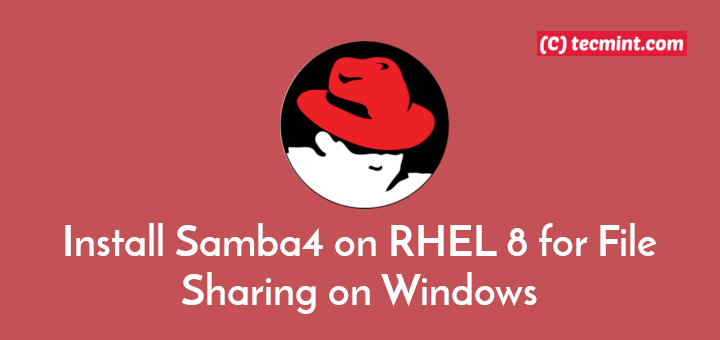

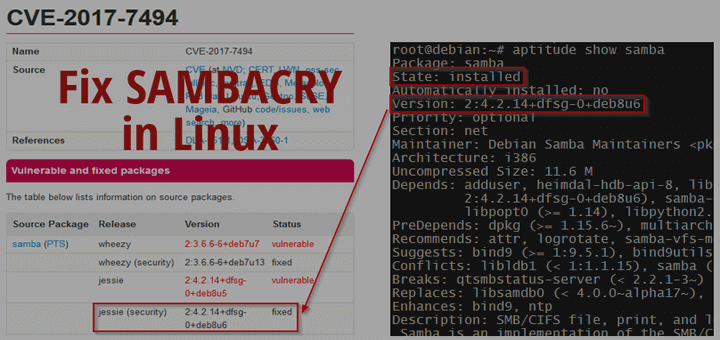
Well, that did not work: Anonymous shares, delete folder failed, permission denied.
Need to add: create mask = 0775, directory mask = 0775
[Anonymous] comment = Anonymous File Server Share path = /srv/samba/anonymous_shares browsable =yes writable = yes guest ok = yes read only = no force user = nobody create mask = 0775 directory mask = 0775Samba is the DEFAULT file-sharing protocol on Linux. Why does it have to be so damned hard to get it to work? It should work “out of the box” as it does on windows. That is the principle reason Linux lags so far behind Windows in market share.
Very grateful tutorial.
@Ganesh
Thanks for the useful feedback. Remember to share it!
You can also do:
@Bhlowe
True, thanks for sharing this.